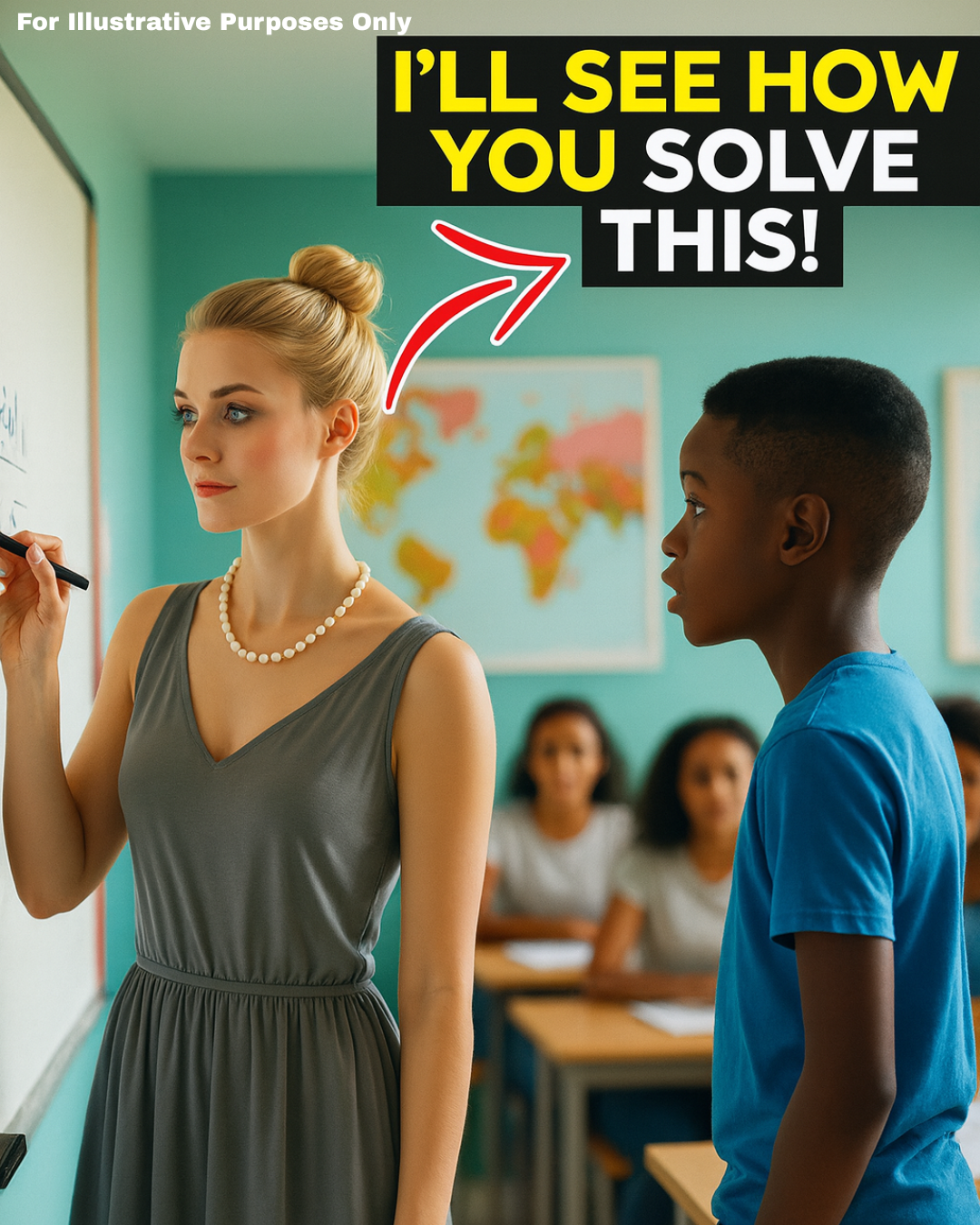Teacher Told Black Student to Solve Higher Grade Math Problem as a Joke—What Happened Next Will Inspire You
In a vibrant classroom buzzing with eager young minds, something unexpected unfolded—an event that would become a powerful reminder of the importance of believing in one another, regardless of stereotypes or expectations.
It began on an ordinary Tuesday morning in Mrs. Harrington’s middle school math class. Known for her creative approach to teaching and her love for challenging her students, Mrs. Harrington had prepared a set of advanced math problems—content typically reserved for high school students.
As she stood at the whiteboard, she jokingly pointed to one of the most complex problems and turned to a young Black student named Marcus. With a half-smile and a playful tone, she said, “Let’s see how you solve this.” While the comment was meant to be light-hearted, it carried an undertone—perhaps unintentionally—of doubt, as if the challenge was too great for him to handle.
Marcus, a quiet yet observant 13-year-old, looked at the board, then at his teacher. The class snickered, not maliciously, but because it felt like a setup for a joke. But Marcus didn’t laugh. He stood up, walked confidently to the front, picked up the marker, and started writing.
What happened next stunned the entire room.
Without hesitation, Marcus broke the problem down step by step. His approach wasn’t just correct—it was methodical, elegant, and beyond what anyone expected. The room fell into a silent awe as Marcus, line by line, solved the equation. When he turned around to face the class, his calm demeanor hadn’t changed, but the expressions in the room had.
Mrs. Harrington stood still, visibly surprised. She wasn’t expecting Marcus—or anyone in the room—to solve that equation. She cleared her throat and simply said, “Well done, Marcus. I stand corrected.”
For Marcus, this wasn’t just about solving a math problem. It was about breaking through assumptions. In that moment, he demonstrated not only his intelligence but the danger of underestimating someone based on surface-level perceptions. His success wasn’t just academic—it was symbolic.
The Power of Expectation
What happened in that classroom is more than just a feel-good story—it’s a reflection of how expectations shape outcomes. Teachers have immense influence over their students. A joke, even unintentional, can carry the weight of bias. When students are consistently expected to perform poorly, they often do. But when they are challenged and believed in, they rise.
Unfortunately, Black students are often subject to lowered expectations. Numerous studies have shown that teachers—consciously or not—tend to expect less from students of color, which affects performance, engagement, and self-worth. But stories like Marcus’s are reminders that potential doesn’t come in one color, background, or accent. It’s universal—and it thrives when nurtured.
The Ripple Effect
Marcus’s moment at the whiteboard had a ripple effect. His classmates saw a peer defy expectations, which challenged their own biases. For Mrs. Harrington, it was a wake-up call. The very next day, she adjusted her lesson plan, ensuring that higher-level problems were integrated into the curriculum—not as a joke, but as an opportunity for everyone.
The school principal later shared the story at a faculty meeting as an example of the hidden potential in every classroom. And Marcus? He became somewhat of a legend at school—not because he was boastful, but because he proved that brilliance often hides behind quiet confidence.
A Call to Action
This story isn’t about shaming teachers—it’s about challenging the way we see and speak to students. Every classroom moment is a chance to build someone up or tear them down. Educators must recognize the power they hold and use it wisely.
And for students, especially those who’ve been underestimated, Marcus’s story is a reminder: your worth is not defined by others’ expectations. You are capable, powerful, and deserving of every opportunity to shine.
Final Thoughts
The moment Mrs. Harrington jokingly told Marcus to solve a “higher grade” math problem, she probably didn’t realize she was setting the stage for something far bigger than math. She unintentionally created a moment that exposed how deeply rooted assumptions can be—and how quickly they can be dismantled by truth.
Marcus didn’t just solve a problem. He taught a lesson far more valuable than any equation: never judge someone’s capability based on what you think you know about them. Because sometimes, the quietest student in the room has the loudest answer.


